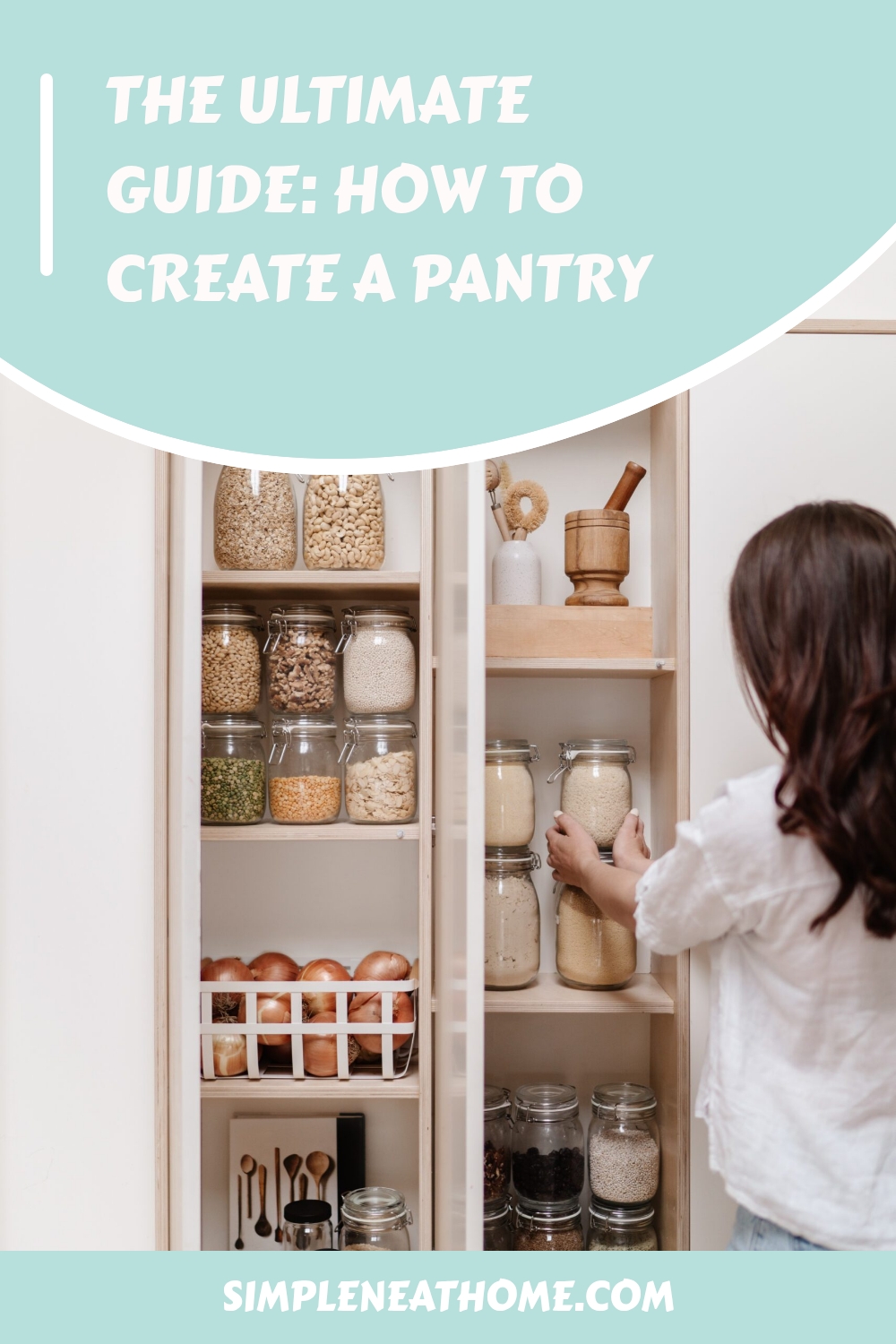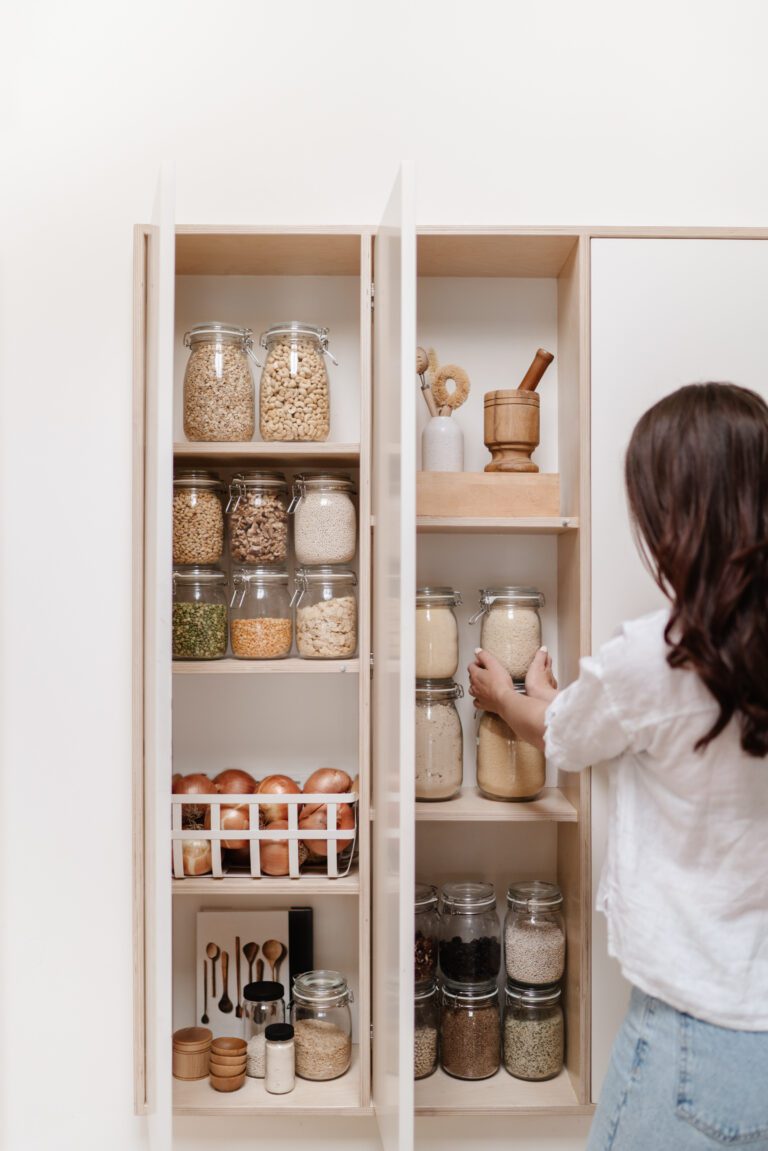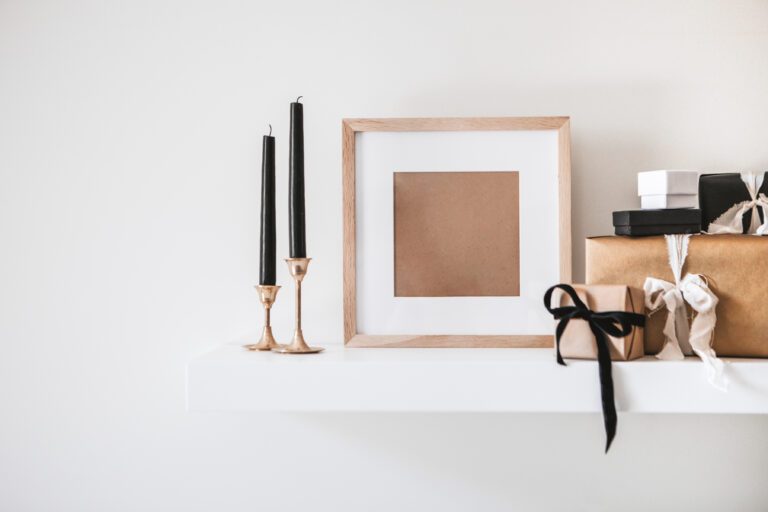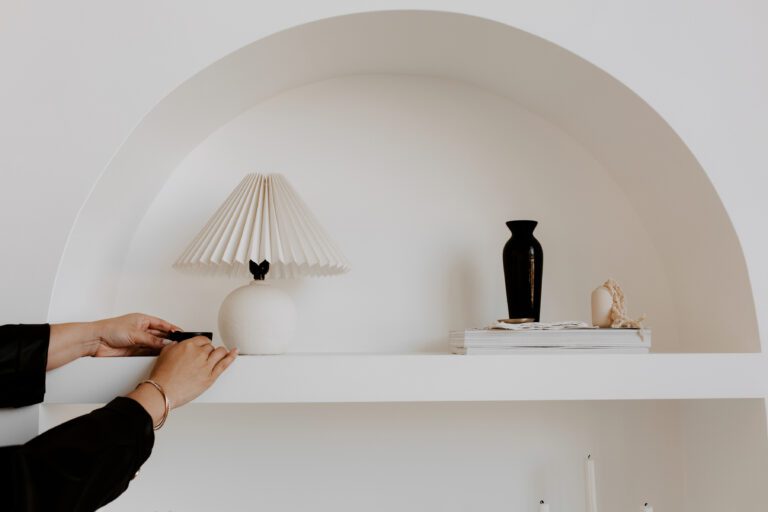The Ultimate Guide: How to Create a Pantry
A well-organized pantry is the heart of a functional kitchen. It’s where you store essentials, find inspiration for meals, and maintain order in your culinary haven. If you’re ready to create a pantry that’s not only practical but also beautiful, you’ve come to the right place. In this guide, I’ll take you through the steps of planning, stocking, and organizing your dream pantry with some genius pantry organization tips.
Planning Your Perfect Pantry:
Before you dive into the process of creating your pantry, thoughtful planning is key. Here’s how to get started:
1. Assess Your Space
Begin by evaluating the available space for your pantry. This could be a dedicated closet, a walk-in room, or even a section of your kitchen cabinets. I’ve used a vintage cupboard that I *think* used to be a linen cupboard but I’m not sure. It currently serves as half pantry, half toy storage, so it’s definitely not something to show off YET! Measure the dimensions carefully, considering height, width, and depth, to make the most of your space.
2. Define Your Needs
Consider your household’s needs and cooking habits. What do you regularly stock in your kitchen? Do you have dietary preferences or restrictions? Identifying your specific requirements will guide your pantry design. If you cook regularly you might want to have space to store spices, or grains such as lentils, rice etc.
3. Set a Budget
Determine a budget for your pantry project. This will help you make informed decisions when choosing storage solutions, containers, and decor elements and will ensure you buy what you really need, rather than what looks pretty on Pinterest. Balancing functionality and aesthetics is crucial.
4. Choose a Location
Decide on the location of your pantry. It’s often situated near the kitchen for easy access but can be in a separate area if space allows. Keep in mind that a pantry should be conveniently located to streamline meal preparation. My gran had a farmhouse which had a huge walk in pantry which was accessed via her living room (weirdly). My own pantry is in the kitchen, but over the other side of the room from where I prepare food. We’re space limited though.
5. Select Shelving and Storage Options
Consider the type of shelving and storage solutions you’d like to incorporate. Adjustable shelves allow for flexibility, while pull-out drawers or bins can make items more accessible. Think about what works best for your specific needs. If you have shelves already in place you can get shelf dividers to add extra mini shelves for extra storage.
6. Lighting Matters
Don’t overlook lighting. Adequate lighting is essential for a well-organized pantry. Ensure there’s enough illumination, especially in walk-in pantries or larger spaces so you can see what you have.
7. Ventilation and Temperature Control
If you’re converting a closet or a small room into a pantry, think about ventilation and temperature control. Pantry items often benefit from a cooler, dry environment, so assess whether additional measures are needed.
8. Get Pantry Inspiration
Check out resources like Pinterest or Instagram for lots of pantry inspiration. There are so many clever pantry organization ideas out there! You can also visit stores like Ikea to see more.
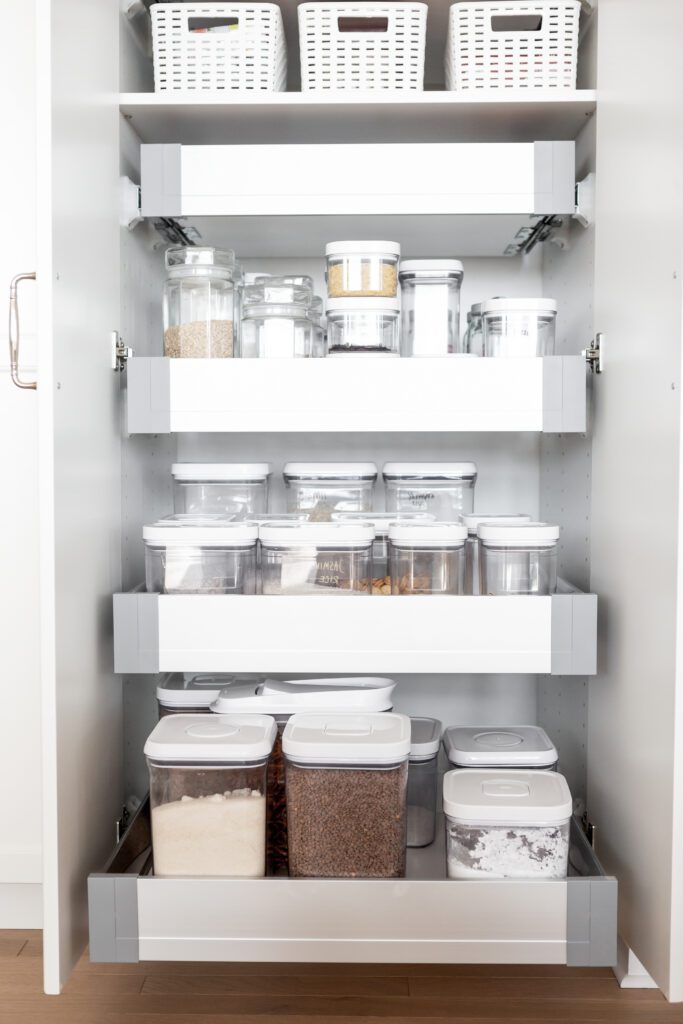
How to Organize Your Pantry
Now that you’ve planned your pantry, it’s time to stock it with essentials. Here’s how to go about it:
1. Declutter and Sort
Before stocking your pantry, declutter your kitchen and sort through existing items. Discard expired or unused items and consolidate duplicates.
2. Categories and Zones
Organize your pantry by creating zones or categories. Common categories include grains, canned goods, spices, baking supplies, condiments, snacks, and cleaning supplies. Designate specific shelves or areas for each category.
This blog may contain affiliate links through which, at no additional cost to you, I may earn a small commission. I only recommend products I would use myself and all opinions expressed here are my own. As an Amazon Associate I earn from qualifying purchases. Read full privacy policy here.
3. Invest in Quality Containers
Quality containers are essential for maintaining freshness and organization. Use glass or plastic airtight containers for dry goods like flour, rice, and pasta. Clear containers make it easy to see what’s inside – using the same style will make it more aesthetically pleasing.
You can also use baskets to store items such as fruit and vegetables, packet food etc.
4. Label Everything
Labeling is a game-changer for pantry organization. Use labels on containers and shelves to identify items. This helps everyone in your household find and return items to their proper places. If you don’t have a label maker you can buy pantry labels already printed for you in a variety of styles.
5. Consider Bulk Purchases
Buying pantry staples in bulk can save you money and reduce packaging waste. Store bulk items in airtight containers to maintain freshness. This is great if you have the space to store things.
6. Prioritize Accessibility
Place frequently used items at eye level or within easy reach. Reserve higher or lower shelves for less commonly used items.
7. Rotate Stock
Practice the “first in, first out” (FIFO) method. When you restock your pantry, place newer items behind older ones. This ensures that older items get used first to prevent food waste.
Organization Tips for a Beautiful Pantry
Now that your pantry is well-stocked, it’s time to make it a visual masterpiece. These organization tips will help you achieve both functionality and aesthetics:
1. Invest in Quality Shelving
If you have the flexibility to install custom shelving, invest in quality materials. Solid wood or wire shelving is durable and can be customized to fit your space perfectly.
2. Use Clear Containers
Opt for clear, airtight containers for dry goods like cereal, flour, and pasta. They not only keep food fresh but also allow you to see the contents easily.
3. Add Pull-Out Drawers
Pull-out drawers or bins are a game-changer in walk-in pantries. They make it simple to access items at the back of shelves without having to rummage.
4. Install Adjustable Shelving
Adjustable shelves give you the flexibility to change the configuration as your pantry needs evolve. This adaptability ensures long-term functionality.
5. Create a Snack Zone
Dedicate a shelf or area to snacks for easy access. Use baskets or bins to keep small items like chips or granola bars organized.
6. Group Like Items
Group similar items together. For example, keep all baking supplies in one section and canned goods in another. This minimizes the time spent searching for ingredients.
7. Consider Drawer Organizers
Drawer organizers are fantastic for keeping utensils, measuring cups, and other small items neatly arranged.
8. Use Vertical Space
Maximize vertical space by installing hooks or racks on the inside of the pantry door for items like aprons, brooms, or cutting boards.
9. Add Decorative Touches
Make your pantry visually appealing with decorative touches like wallpaper, a fresh coat of paint, or stylish baskets and bins.
10. Regular Maintenance
Regularly review your pantry to ensure it stays organized. Dispose of expired items, restock as needed, and adjust shelf placement if necessary.
Create The Pantry of Your Dreams
Creating a pantry that’s both functional and aesthetically pleasing is within your reach. Through careful planning, thoughtful stocking, and strategic organization, you can transform your pantry into the heart of your kitchen. With everything in its place and a touch of personal style, your pantry will not only make meal prep a breeze but also become a space you take pride in. So, roll up your sleeves and embark on the journey to your dream pantry—you’ll be rewarded with a beautifully organized kitchen haven.




